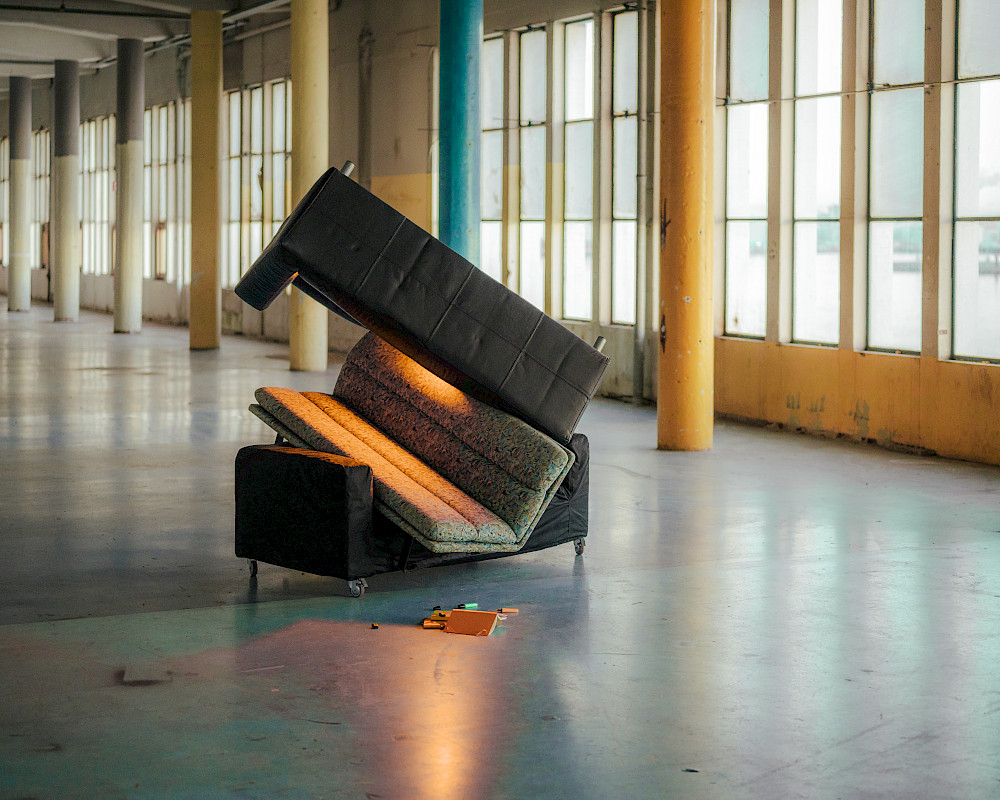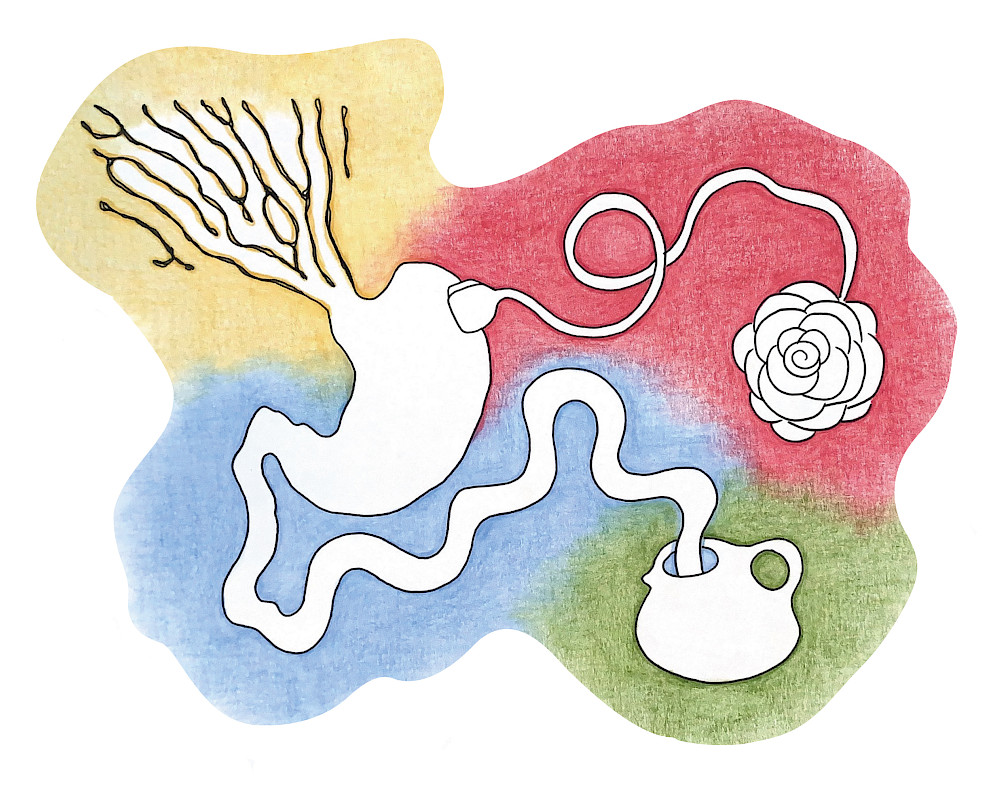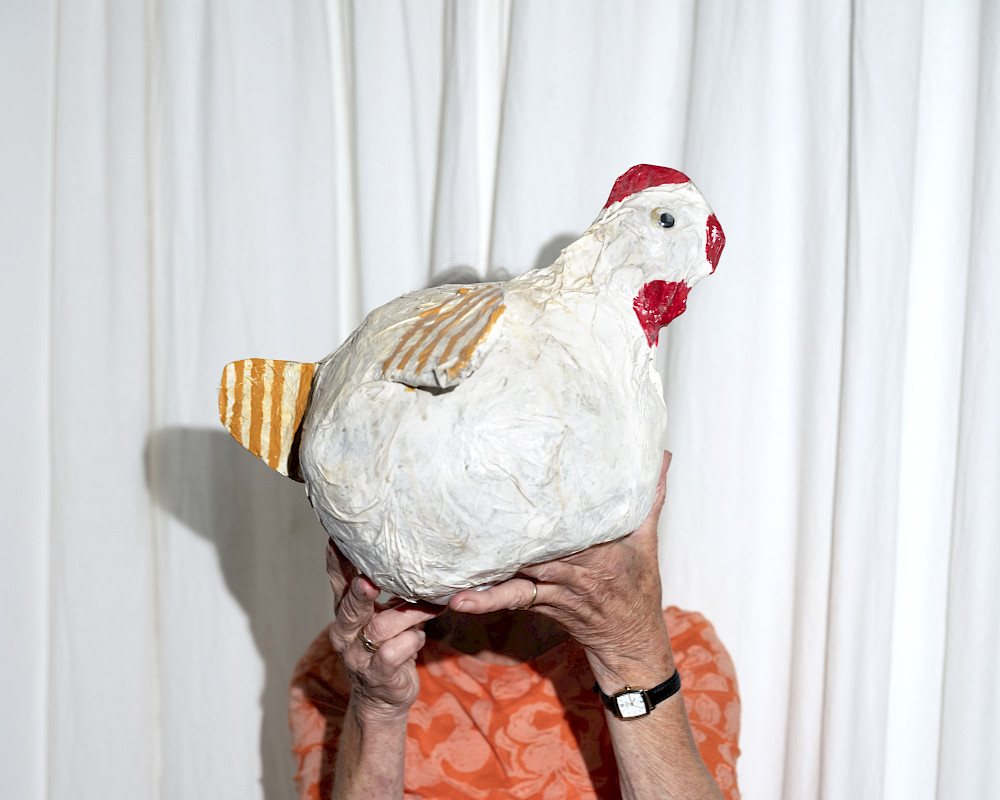essay
The innocent arms factory of Wijnand Elbert Kerkhoff
Zippora Elders
Zippora Elders is the former Head of Curatorial Department & Outreach at Gropius Bau in Berlin. Previous posts include Sonsbeek in Arnhem, Kunstfort bij Vijfhuizen, The Performance Show at Art Rotterdam, Foam Photography Museum and Stedelijk Museum Amsterdam. As an art historian and writer, Elders has curated numerous solo and group exhibitions and contributed to several publications. Living and working from Berlin, she advises, juries and supervises international organizations and platforms on art and culture.
The child of a Moluccan father and Indo-Dutch mother, Elders occasionally writes professional and personal reflections on the art world in relation to the knowledge and experiences drawn from these cultural backgrounds and communities.
15
min read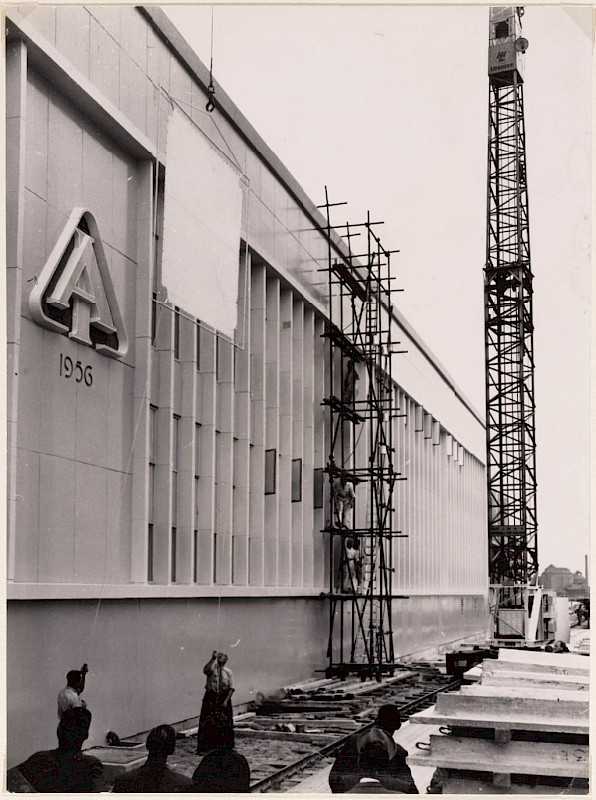
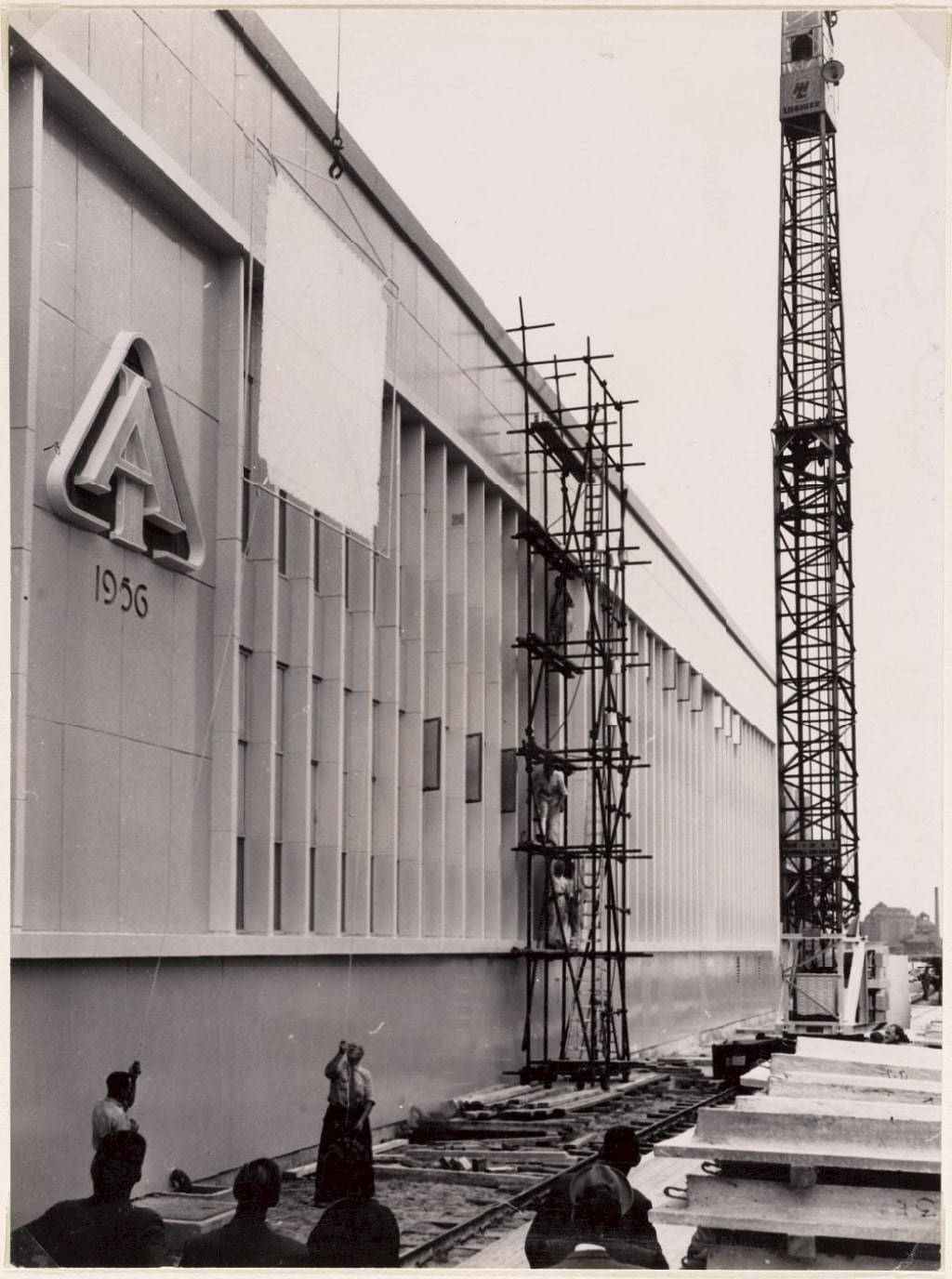
This essay is part of Remco Torenbosch's art commission for The Couch. Click here to explore the photographs of Wijnand Elbert Kerkhoff in detail.
Strike Germany, the call for cultural workers and artists to strike and refrain from collaborating with or within public institutions in Germany, was initiated shortly after the start of the current war in Israel and Palestine. Germany is blamed for complicity in war crimes and what the International Court of Justice described as possible genocide because of the large-scale supply of arms and the visible and less visible repression and exclusion of criticism of Israel's current government.
“Strike Germany means abandoning colleagues and citizens who are already struggling,” says one. “But what about solidarity with those dissenting voices who have long been visibly and invisibly excluded?” says the other. Many are breaking their heads over the scale and gruesome way people are being killed and held captive in the war for months now, with a very high number of civilian deaths and injuries in Gaza, an area where people cannot get out due to Israeli control. Nonetheless, some enabling aspects of war are indeed not that complex.
What facilitates large-scale violence, destruction and killing? Weapons, money, backing, silence. Amongst others.
Zooming out
Het HEM has been an institution for art and artists since 2018. Until 2003, the Hembrugterrein had a military function. Originally, it was the arms and ammunition factory Artillerie Inrichtingen (AI), manufacturing for the Dutch army. AI had an annex in Bandung. The weapons and ammunition made by mostly Indonesian factory workers for the Royal Netherlands East Indies Army (KNIL), could be used against the Indigenous population during uprisings and later the reoccupation and war of independence. It is one of the numerous painful outcomes from centuries-long of colonial oppression in which people have been systematically cut off from their environment, whether through the theft of knowledge and culture, or by (forced) cooperation in their own oppression.
In pre-independent Indonesia, working for the occupation was for some a means of survival. This gave access to security, income, food and education, for example, if the homeland was exhausted by the imposed monoculture. Indeed, the violent oppression and exploitation of Moluccans and the land they lived on began as early as the 1621 genocide [1]. AI was founded that same century [2].
In the 19th and 20th centuries, several South Moluccans joined the KNIL as soldiers [3]. They operated as an elite corp. In 1884, Hendrik Colijn was the KNIL ‘s commander and led an attack against the ruling Hindu enclave on Lombok. Colijn later described this attack as follows: “fair women with infants on their arms” who fought with lances and pieces of lead. “Fortunately, my brave Ambonese stood like a wall. After the 8th attack, very few remained, asking for mercy, I believe 13. (...) I turned back to light a cigar. Some heart-wrenching cries sounded and when I turned around again, those 13 were dead too.’” [4] At that time, too, stepping back for a moment, turning around, looking away, zooming out and standing back was a privilege not everyone could afford. Eventually, the Moluccan soldiers would be dishonorably discharged in the 20th century and Colijn became prime minister.
Overview
In the 1920s, photographer Wijnand Elbert Kerkhoff (1886-1974) took landscape and documentary photos in the city of Bandung. The images were meant to provide information about everyday life and colonial industry in the 'Paris of Java'. His use of a wide-angle lens is characteristic of the photos. The serene, visually balanced overview shots support the image of efficiency, technical ingenuity, and overseas entrepreneurship that the Netherlands loved to show off. The architecture reflects pragmatism and commercial spirit – the obedient production of destruction. The Netherlands supposedly brought 'civilisation'.
It is photography typical of its time. Photography had been a tool since the 19th century in the urge to document, archive or classify; in short, to categorize. To frame. Kerkhoff's documentary photography is sec and direct. Rust, reinheid en regelmaat (peace, cleanliness, and regularity): the order and balance in the architecture and image make the arms factory 'beautiful'.
The seemingly neutral, tidy look is reminiscent of other Western European photography, from the categorized plants of Karl Blossfeldt and workers of August Sander around Kerkhoff’s time, to the architectural typologies of Bernd and Hilla Becher in the 1970s. Objective photography also resurged in the 1990s, with familiar names particularly in Germany: Andreas Gursky's monumental architectural photographs, Thomas Ruff's straightforward portraits, Thomas Struth's decided families. There is something matter-of-fact about these pictures, as if the subjects are consistently approached with distance, the photographer out of the picture [5]. But of course this harmony, whether in the internal dynamics of a family or the world of fauna, is an illusion. However orderly, these photographs are made from a frame of reference, guided by bias, intention and situatedness. Even 'objective' photographs are not neutral.
Fig leaf
Gloria Wekker, emeritus professor of Gender Studies at Utrecht University, once said about objectivity: “I'm not one for objectivity. This is another reason why people have doubts as to whether I am a real scientist. In a lot of critical sciences, such as gender studies and cultural studies, this ideal of objectivity is long gone. We say: this objectivity is a fig leaf for the positions men hold.” [6]
Weapons bring destruction. There is no harmony or balance. No certainty. Ocean Vuong describes that chaos of war heartbreakingly in the book On Earth We're Briefly Gorgeous: “When he began his massive bombing campaign in North Vietnam, General Curtis LeMay, the then chief of staff of the US Air Force, said he intended to bomb the Vietnamese ‘back to the Stone Age’. To destroy a people, then, is to set them back in time. The US military would eventually unleash more than ten thousand tons of bombs in a country no bigger than California – more than the number of bombs used in all of World War II combined.” [7]
Rust, reinheid en regelmaat (peace, cleanliness, and regularity): the order and balance in the architecture and image make the arms factory 'beautiful'
In White Innocence, Gloria Wekker connects ‘white innocence’ with the Dutch ‘self-congratulatory image’: the perspective in which the Dutch have nothing to do with slavery and the colonial pasts, the acts of violence committed by the Dutch in Indonesia, and the deportation of Jews from the Netherlands in World War II, amongst other atrocities. “The point is: our cultural archive, everything about our national identity that is in our heads, originated on the grounds of a colonial empire that existed for four hundred years and in which race was the conclusive factor. Palestinian-American literary scholar Edward Said has said: ‘Imperialism is the decisive cultural horizon of Western Europe’ – and you need only look around the Netherlands and you’ll see it.” [8]
Innocence
That ‘innocent’, evidently superior gaze imposes itself in Kerkhoff's photographs. The images come over as objective, 'professional' and transparent: a seemingly truthful depiction of the Dutch arms factory in Bandung. The perspective is level and still. The photographs create a serene image of the factory. They follow the symmetrical lines of the architecture.
The balanced factory interior pleases the eye of the beholder, and the work culture therefore seems equally peaceful. Supposedly calm, the factory workers watch an explosive being made. Artillery shells lie patiently waiting in a row. Another photo shows grenades halved; contents exposed. There is a photograph of the monumental factory hall with rows of worktables and guns, neatly arranged, laid out and displayed. In another picture, guns are transported outside by means of trolleys on small rails. All the while Indonesian factory workers with batik headgear carry out supporting work.
After World War II, Indonesia was the first country to declare independence with the famous proklamasi in 1945. This inspired independence movements worldwide. What followed was the decolonization war marked by violent clashes in 1945 and 1946 and extreme and often illegal military actions on Dutch orders during the reoccupation. [9] The government in the Netherlands created the image of innocent police (‘politionele’) actions to briefly restore order; in reality, it was a prolonged and extensive military operation. 120,000 conscripts were sent to Indonesia. Deserters who did not support the occupation were imprisoned. The Dutch army ordered summary executions of Indonesian combatants and civilians. [10]
“‘Imperialism is the decisive cultural horizon of Western Europe’ – and you need only look around the Netherlands and you’ll see it.” - Gloria Wekker quoting Edward Said
Curtailment
Profits from resources exploited in Indonesia were meant to support the post-war rebuilding period in the Netherlands. Djajeng Pratomo, an Indonesian student who was with the anti-German resistance in the Netherlands [11], spoke about the struggle for independence after World War II as editor-in-chief of the Dutch magazine Indonesia: “The barrier of fascism has fallen away, but we face new obstacles rooted in the same soil from which fascism grew: the self-interest of groups that benefit from an impoverishment and a curtailment of the right of the masses. These are the great lords of the Indonesian plantations, of tin and oil.” [12]
The independence was recognized by the Netherlands only in 1949. AI was transferred to the Indonesian army by the Dutch government that year and grew into today's multi-million-dollar company PT Pindad, which calls itself the largest arms manufacturer in Southeast Asia. [13] The state-owned company supplies various countries in the region and the African continent and the Middle East. [14] In 2022, it was reported that PT Pindad sells arms to Myanmar's military regime, which is held responsible for the Rohingya genocide and the junta's terror campaign. [15]
Several areas that are now under Indonesian rule, are still fighting for autonomy. In West Papua, an estimated half a million people have been killed since the mid-1960s in what is called an invisible genocide. [16] Many Moluccans in the Netherlands demonstrate solidarity with Papua in their struggle against the exploitation of the people and the ecology of Melanesia. On RMS Day – a commemoration of 25 April 1950, when the Moluccans proclaimed independence – flags and banners for West Papua and other indigenous peoples and communities (including Palestine) can be seen, also in the Netherlands.
"To destroy a people, then, is to set them back in time" - Ocean Vuong
Resistance
It is said that a soul cannot move on if it dies an incredible, violent death, is not ritually buried or cremated. The question arises: what soul is captured in Kerkhoff's photographs of the factory? And what does it mean that these are now on display, online, for the soon to be shut Het HEM, the former headquarters of AI, of which the factory in Bandung was an annex? The photographs are almost a century old. But the power of the coordination of destruction is extremely topical.
Through its director, Het HEM has a connection to Amsterdam nightclub Trouw (her previous post), which was set in the former factory of daily newspaper Trouw. [17] First published in 1943, Trouw was an illegal newspaper of the resistance during the German occupation. [18] The power of images and words intersects in journalism, in the media. War is as much a (digital) media war as a physical war. Image and word can stand by the side of weapons as well as defense. But opposition works faster when it operates in the broadside, at different levels, in front, in plain sight, on the barricades, and behind the desk.
Future
Protests against the violence in Gaza have been taking place on university campuses in North America since mid-April 2024. Students strike by ceasing their educational activities and setting up tent camps. They shut down the ins and outs of education. In early May, the student occupation commenced at the University of Amsterdam. In a few days and weeks, despite harsh police action, this was widely joined by other protesters and in other places in Amsterdam and the Netherlands. Jews around the world have been speaking out for months, if not years. And there are protests in Israel, too, against its own government and its policies, calling for an immediate ceasefire.
Organization of dissent is often broken, ‘curtailed’, as soon as it becomes too risky and too big for the ruling order. Bringing war requires precision and discipline. Systematics, bureaucracy, profit calculation. Prolonged destruction is fueled by focus, patience, and self-assertion – the privilege of being allowed to zoom in and out, to step back a bit, of being the norm.
It takes strength, clarity of vision and solidarity to go against this. Unsurprisingly, it is more often the younger mind that can think beyond the prevailing norm, that wants to look outside the given framework. For some, it proves challenging to navigate within and around the rules of law or overall reasonableness while keeping the goal in sight, but the overall concern and despair about massive human rights violations, inarticulateness and slow diplomacy, is not only undeniable but also human. The question resounds: if we let this happen, what will the future hold?
"The barrier of fascism has fallen away, but we face new obstacles rooted in the same soil from which fascism sprouted" – Djajeng Pratomo
Frame
The virtue of the photographer, ‘neutral’ reporting, architectural straightforwardness, the efficiency of unfair labor practices, the essence of the trading mentality, and the irresistible power of capital: there is a lot in Kerkhoff's photographs. Two centuries of photography have taught the viewer to find them beautiful and reliable. ‘This is the world how it is and should be’, the photographs proclaim from their self-confident frames, from their imperialist horizon.
If the colonial trading spirit – however ‘innocent’ and self-convinced, having once died a violent near-death itself – continues to haunt the many aspects of our contemporary reality so persistently, the strategy of striking and resisting might not be so incomprehensible after all.
This text was written in April and May of 2024.
References
1. 'In 1621, an estimated 14,000 Bandanese, almost the entire population of Banda in the South Moluccas, were systematically murdered or enslaved on the orders of Jan Pieterszoon Coen of the Dutch East India Company (VOC) because of the lucrative trade in nutmeg and mace. That eco-diversity around the volcanic Banda Islands is called The Ring of Fire. The rich vegetation has remained a motivation for clashes of power, and the Moluccan families who travelled to the Netherlands on military orders after the Moluccas were transferred to Indonesia have never been able to return permanently.' In: Zippora Elders. “De Geesten van Bandung”. Metropolis M, 04.02.2024. https://metropolism.com/nl/opinie/de-geesten-van-bandung-een-tweede-brief-uit-duitsland/
2. Van onze verslaggever. “Laatste munitiefabriek gaat dicht.” De Volkskrant. 17.4.2002. https://www.volkskrant.nl/voorpagina/laatste-munitiefabriek-gaat-dicht~b0e9cd6e/
3. See also: Zippora Elders. The Sound of the Black Magic. In: Bonaventure Soh Bejeng Ndikung, Antonia Alami, Amal Alhaag, Zippora Elders, Aude Christel Mgba, Krista Jantowski. Force Times Distance. On Labour and its Sonic Ecologies. Archive Books, 2021.
4. See also: https://www.nrc.nl/nieuws/1998/04/15/colijn-beval-op-lombok-executie-vrouwen-kinderen-7395254-a30237. Paraphrase from: Zippora Elders. The Sound of the Black Magic. In: Force Times Distance. On Labour and its Sonic Ecologies. Archive Books, 2021.
5. Zippora Elders. “Roe Ethridge: Opoffering en Repetitie.” 8.4 – 5.6.2016. Cahier, Foam.
6. Great Hiemersma. Emeritus hoogleraar Gloria Wekker: “Witte onschuld bestaat niet.” Vrij Nederland, 6.6.2016. https://www.vn.nl/gloria-wekker-witte-onschuld-bestaat-niet/. Original: ‘‘Ik ben niet van de objectiviteit. Dat is óók een reden waarom mensen betwijfelen of ik een echte wetenschapper ben. In een heleboel kritische wetenschappen, zoals gender studies en culturele studies, is dat ideaal van de objectiviteit allang achterhaald. Wij zeggen: die objectiviteit is een schaamlapje voor de posities die mannen innemen.’
7. Ocean Vuong. On Earth We’re Briefly Gorgeous. Vintage, 2019. P. 60
8. Great Hiemersma. “Emeritus hoogleraar Gloria Wekker: Witte onschuld bestaat niet.” Vrij Nederland, 6.6.2016. https://www.vn.nl/gloria-wekker-witte-onschuld-bestaat-niet/ Original: ‘Het punt is: ons cultureel archief, alles wat over onze nationale identiteit tussen onze oren zit, is tot stand gekomen op grond van een koloniaal rijk dat vierhonderd jaar heeft bestaan en waarin ras de beslissende factor was. De Palestijns-Amerikaanse literatuurwetenschapper Edward Said heeft gezegd: “Imperialisme is de beslissende culturele horizon van West-Europa” – en je hoeft maar om je heen te kijken in Nederland en je ziet dat.’
9. See also: Zippora Elders. The Sound of the Black Magic. In: Bonaventure Soh Bejeng Ndikung, Antonia Alami, Amal Alhaag, Zippora Elders, Aude Christel Mgba, Krista Jantowski. Force Times Distance. On Labour and its Sonic Ecologies. Archive Books, 2021.
10. Tomas van Heste. “Hoe David van Reybrouck een poffertje proeft en het Nederlandse zelfbeeld corrigeert.” De Lage Landen, 15.07.2021. https://www.de-lage-landen.com/article/hoe-david-van-reybrouck-een-poffertje-proeft-en-het-nederlandse-zelfbeeld-corrigeert
11. Jos Sinnema. “Raden Mas Djajeng Pratomo ist gestorben.” Gedächtnisbuch für die Häftlinge des KZ Dachau, 19.02.2018. https://www.gedaechtnisbuch.org/raden-mas-djajeng-pratomo-ist-gestorben/
12. Via: David Van Reybrouck. Revolusi. Indonesië en het ontstaan van de moderne wereld. De Bezige Bij, 2020. Original: ‘De barrière van het fascisme is weggevallen, maar wij staan voor nieuwe obstakels die geworteld zijn in diezelfde bodem, waaruit het fascisme is opgegroeid: het eigen belang van groepen die baat hebben bij een onmondigheid en een beknotting van het recht van de massa. Dat zijn de grote heren van de Indonesische plantages, van de tin en de olie.’
13. The purchase of arms by the Dutch government in Israel eventually led to the end of Artillery Establishments (which would become Eurometaal). See also: Van onze verslaggever. “Laatste munitiefabriek gaat dicht.” De Volkskrant. https://www.volkskrant.nl/voorpagina/laatste-munitiefabriek-gaat-dicht~b0e9cd6e/
14. Anton Hermansyah. “Shooting for the moon. Eyeing the world’s best weapons store industry.” The Jakarta post. 08.08.2016.https://www.thejakartapost.com/longform/2016/08/08/shooting-the-moon.html
15. See also: https://www.justiceformyanmar.org/stories/asean-governments-and-companies-complicit-in-the-myanmar-militarys-atrocity-crimes
16. Helen Davidson. “West Papua: UN must supervise vote on independence, says coalition.” The Guardian, 03.05.2016. https://www.theguardian.com/world/2016/may/03/west-papua-un-must-supervise-vote-on-independence-says-coalition
17. Part of the programming was Stedelijk at Trouw, which Zippora Elders curated with Hendrik Folkerts and Bart Rutten in 2013.
18. Also see: https://www.oorlogsbronnen.nl/thema/Trouw

